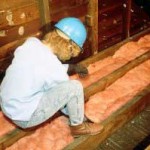 An article on the Eco Evaluator confidently talks about the application of different insulation types and the costs involved in each.
An article on the Eco Evaluator confidently talks about the application of different insulation types and the costs involved in each.
The benefits of insulation include, but are not limited to, effective soundproofing, higher energy efficiency and lesser need to maintain heating and cooling. The article tries to shed some light on the best kind of insulation application. Let me summarise:
Batt Insulation
Benefits
- Easy to install
- You can do it the DIY way
Disadvantages– can get compressed or crushed easily
Rigid foam or foam board
Benefits
- Rich insulation value
- Great for HVAC
Disadvantages– It is relatively expensive
Loose Fill or Blown In
Benefits
- Uses recycled materials extremely well
- Great aid for additional insulation
- Taps the irregular or hindered areas perfectly.
Disadvantages– The chemicals and fire retardants used in its installation can pose possible health threat.
Spray Foam
Benefits
- Provides a more efficient thermal barrier than most of its competitors (except SIP)
- Nearly waterproof ( a clear advantage over others)
- Uses lesser construction time
Disadvantages– Can be tough on the pocket
Structural Insulated Panels (SIP)
Benefits
- Provides very efficient thermal barrier
- Great for walls and roofs
Disadvantages – Does not cover for the needs of ventilation and fresh air exchange
Insulation Type Costs
Based on cost per square foot per R-value, Spray Foam ($0.17-$0.25) and Foam boards ($0.07-$0.10) prove expensive. Batt fittings ($0.02-$0.03) and loose fills ($0.02) are much cheaper in comparison but certainly prove weaker in terms of quality too.
You can read the original article here.
Which insulation type have you used in the past and, given the pros and cons which one are you considering now?

